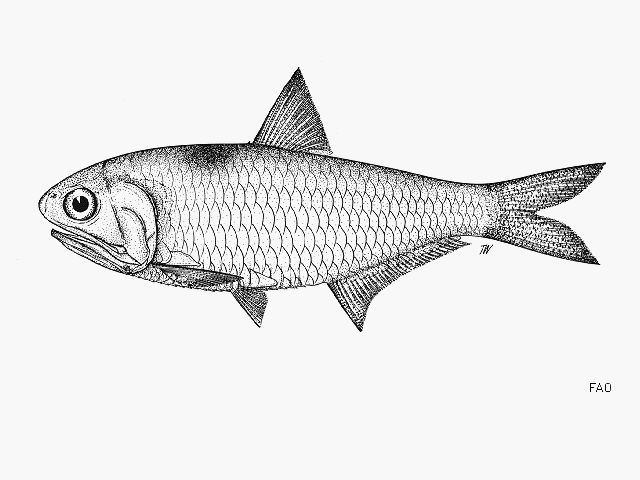| Engraulidae (Anchovies), subfamily: Coiliinae |
| 6.9 cm SL (male/unsexed) |
|
pelagic-neritic; brackish; marine; depth range 0 - 50 m |
| Western Central Pacific: northern Australia. |
|
Dorsal spines (total): 0-0; Anal spines: 0-0; Anal soft rays: 26-28. Belly with 15 or 16 + 8 or 9 = 23 to 25 keeled scutes from isthmus to anus. Maxilla short, reaching to hind border of pre-operculum; first supra-maxilla short, about half length of second. Pseudobranch moderate. A diffuse dark saddle just before dorsal fin origin; no dark blotch behind gill opening. |
| Presumably marine, pelagic and coastal, but its very close similarity to T. aestuaria and T. brevicauda suggests that it may also enter estuaries. More data needed. |
|
Least Concern (LC); Date assessed: 28 February 2017 Ref. (130435)
|
| harmless |
Source and more info: www.fishbase.org. For personal, classroom, and other internal use only. Not for publication.

